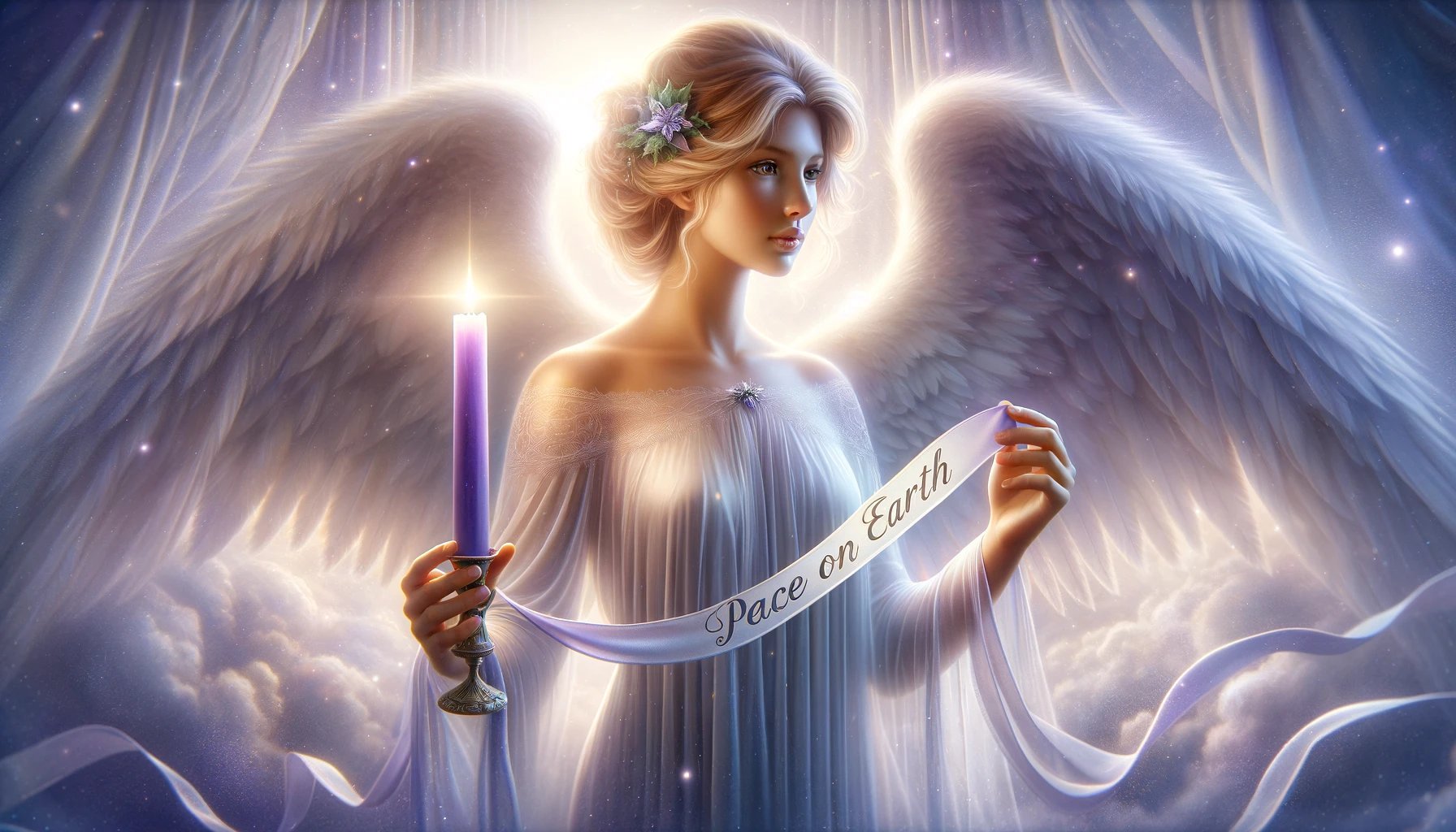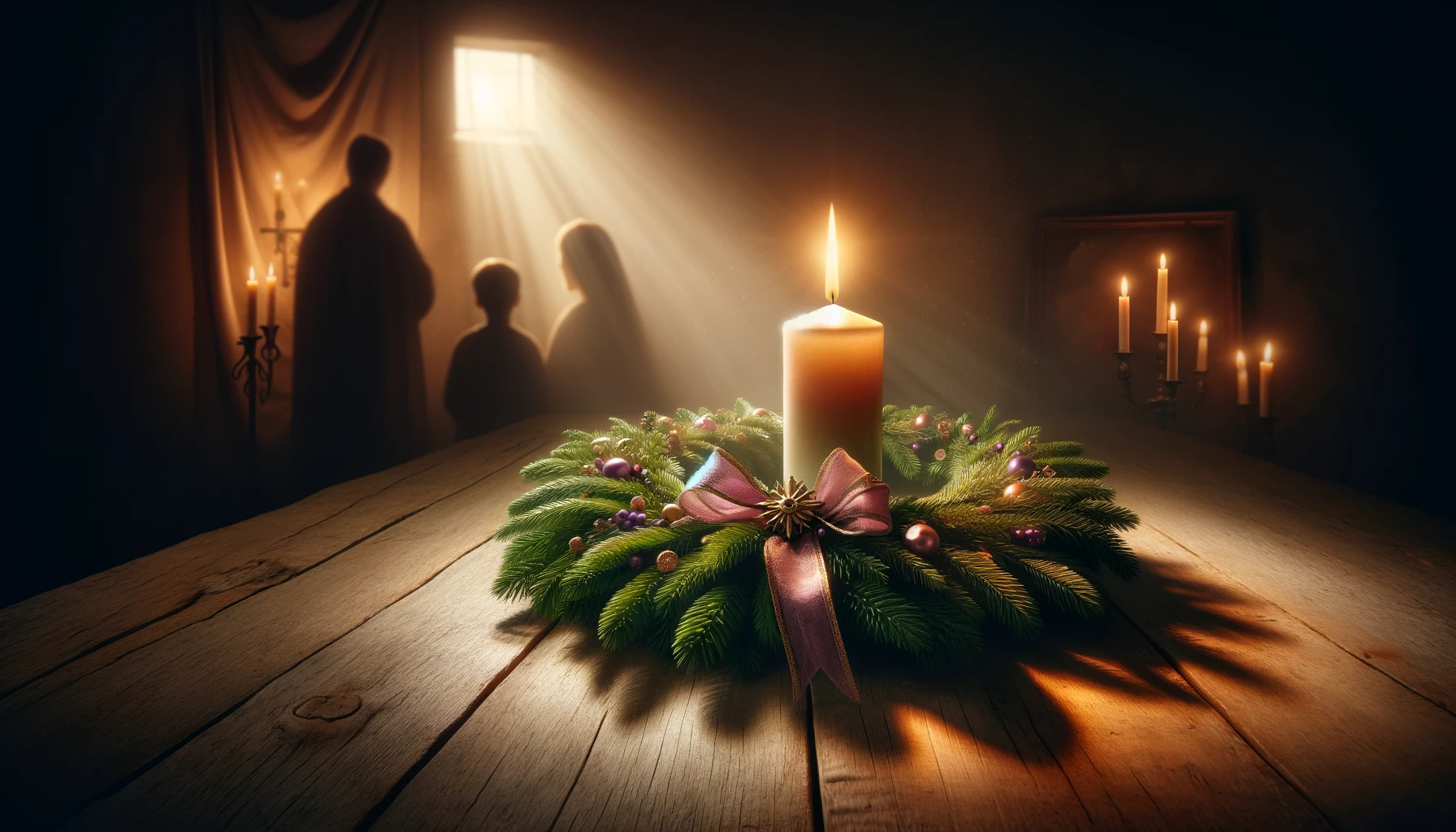Home>Special Themes>What Do The Candles Of The Advent Wreath Represent


Special Themes
What Do The Candles Of The Advent Wreath Represent
Published: February 14, 2024
Ericka Andersen, an editor at Christian.net, expertly merges digital strategy with content creation, focusing on faith and societal issues. Her communication skills enhance the platform's engaging narratives, fostering meaningful dialogue on belief's impact on society.
Discover the significance of the candles on the Advent wreath and their representation of special themes. Learn about the traditions and meanings behind each candle.
(Many of the links in this article redirect to a specific reviewed product. Your purchase of these products through affiliate links helps to generate commission for Christian.net, at no extra cost. Learn more)
Table of Contents
Introduction
The Advent wreath is a cherished symbol of the holiday season, evoking a sense of anticipation and spiritual reflection as it graces homes, churches, and communal spaces. This timeless tradition, with its roots deeply embedded in Christian customs, serves as a poignant reminder of the profound significance of the Advent season.
The Advent wreath, typically adorned with vibrant evergreen foliage and adorned with candles, stands as a beacon of hope and light during the dark winter months. Each element of this revered symbol carries profound meaning, offering a rich tapestry of tradition, faith, and symbolism that has endured through the ages.
As we delve into the history, meaning, and symbolism of the Advent wreath, we will uncover the profound significance of each candle and the wreath itself. This exploration will illuminate the spiritual journey that the Advent season represents, inviting us to embrace the timeless traditions that have brought comfort and joy to countless individuals and communities throughout history.
Read more: What Do Advent Wreath Candles Represent
History of the Advent Wreath
The history of the Advent wreath can be traced back to pre-Christian Germanic people, who utilized the circular shape of the wreath as a symbol of the eternal cycle of the seasons. The evergreen foliage, often used in these wreaths, represented the enduring nature of life even in the depths of winter. Over time, this tradition evolved, and the wreath became intertwined with the celebration of Advent, marking the beginning of the liturgical year in the Christian calendar.
The modern Advent wreath, as we recognize it today, emerged in the 19th century in Germany. It is believed that Johann Hinrich Wichern, a Protestant pastor and educator, created the first Advent wreath in 1839. Wichern worked with children at a mission school in Hamburg, where he sought a visual way to help them count down the days until Christmas. He fashioned a large wooden ring with 20 small red and 4 large white candles. The small candles were lit on weekdays, while the larger white candles were lit on Sundays.
This tradition gained popularity and spread throughout German Protestant churches, eventually making its way to Catholic communities as well. The symbolism of the wreath and its candles became deeply intertwined with the themes of Advent, representing the gradual anticipation of the birth of Jesus Christ.
As the tradition of the Advent wreath spread across Europe and beyond, it underwent various adaptations and interpretations within different Christian denominations. Today, the Advent wreath is a ubiquitous symbol in churches and homes around the world, serving as a visual and spiritual focal point during the Advent season.
The history of the Advent wreath is a testament to the enduring power of tradition and symbolism, bridging ancient customs with contemporary celebrations. Its evolution over centuries reflects the universal human desire to find meaning and hope in the midst of darkness, making it a cherished emblem of faith and anticipation for people of diverse cultures and backgrounds.
The Meaning of the Candles
The candles adorning the Advent wreath hold profound symbolism, each representing a distinct aspect of the Advent season. As the wreath is progressively illuminated throughout the four weeks leading up to Christmas, the candles convey a narrative of spiritual significance and anticipation.
-
The First Candle – Hope: Known as the "Prophet's Candle," the first candle symbolizes hope and serves as a beacon of expectation. It represents the anticipation of the coming Messiah, echoing the hope expressed by the prophets of the Old Testament. As this candle is lit, it kindles a sense of optimism and reassurance, reminding believers of the enduring promise of salvation and renewal.
-
The Second Candle – Peace: Referred to as the "Bethlehem Candle," the second candle embodies the theme of peace. It commemorates the peaceful anticipation of the birth of Jesus Christ, reflecting the tranquil setting of Bethlehem where the Savior was born. This candle serves as a poignant reminder of the profound peace that Christ's arrival brings to the world, offering solace and serenity amidst the chaos and turmoil of daily life.
-
The Third Candle – Joy: Often called the "Shepherd's Candle," the third candle exudes the essence of joy. It represents the joy that radiated from the hearts of the shepherds who received the angelic proclamation of Christ's birth. This candle illuminates the profound happiness and jubilation that permeates the Advent season, inviting believers to embrace the transformative joy that emanates from the promise of redemption and grace.
-
The Fourth Candle – Love: Known as the "Angel's Candle," the fourth candle embodies the boundless love of God manifested through the gift of His Son. It symbolizes the love that permeates the Advent season, encapsulating the divine love that compelled God to send His Son into the world. This candle serves as a poignant reminder of the unconditional love that underpins the Christian faith, inspiring believers to embody and share this love with others.
In addition to these four candles, a fifth candle, often white, is positioned in the center of the wreath. This candle, known as the "Christ Candle," is lit on Christmas Eve or Christmas Day, symbolizing the culmination of the Advent season with the birth of Jesus Christ, the Light of the World.
The candles of the Advent wreath collectively weave a narrative of hope, peace, joy, and love, encapsulating the profound spiritual journey of the Advent season. As each candle is kindled, it illuminates the path toward the celebration of Christ's birth, inviting believers to embrace the transformative power of these timeless virtues.
This section delves into the profound symbolism of the candles adorning the Advent wreath, illuminating the spiritual significance and anticipation that they embody. Each candle represents a distinct aspect of the Advent season, weaving a narrative of hope, peace, joy, and love as believers journey toward the celebration of Christ's birth.
The Symbolism of the Wreath
The circular shape of the Advent wreath holds profound symbolism, representing the eternal nature of God and the unending cycle of the seasons. The evergreen foliage, commonly used to adorn the wreath, serves as a powerful emblem of enduring life and the promise of renewal. Its lush greenery, even amidst the barren winter landscape, symbolizes the everlasting hope and vitality found in the Christian faith.
The four candles encircling the wreath, each representing a week of the Advent season, are positioned equidistantly to symbolize the equality and unity of all believers in their anticipation of the birth of Christ. This arrangement reflects the shared journey of faith and spiritual preparation that unites individuals and communities during the Advent season.
The wreath's placement within homes and churches further amplifies its symbolism. Placed on a table or suspended from the ceiling, the wreath becomes a focal point for communal gatherings and worship, fostering a sense of unity and shared purpose among those who gather around it.
The gradual lighting of the candles throughout the Advent season mirrors the progressive illumination of the world through the arrival of Christ, the Light of the World. As each candle is lit, it dispels the darkness, symbolizing the growing anticipation and spiritual enlightenment that culminates in the celebration of Christ's birth.
The Advent wreath, with its vibrant greenery and radiant candles, serves as a visual representation of the spiritual journey toward the fulfillment of God's promises. It embodies the themes of hope, peace, joy, and love, infusing the surrounding space with a palpable sense of anticipation and reverence.
As a symbol of unity, renewal, and spiritual enlightenment, the Advent wreath transcends cultural and denominational boundaries, resonating with believers around the world. Its timeless symbolism continues to inspire and uplift, inviting individuals to embrace the profound significance of the Advent season and the enduring promise of Christ's coming.
The Advent wreath's symbolism extends beyond its physical form, permeating hearts and minds with the timeless truths it represents. It stands as a testament to the enduring hope and light that Christ brings into the world, inviting believers to embark on a journey of spiritual renewal and anticipation as they prepare to celebrate the birth of the Savior.
This section delves into the profound symbolism of the Advent wreath, illuminating its representation of eternal life, unity, and spiritual enlightenment. The wreath's circular shape, evergreen foliage, and arrangement of candles collectively embody the enduring hope and anticipation of the Advent season, serving as a powerful visual and spiritual focal point for believers around the world.
How the Advent Wreath is Used
The Advent wreath serves as a focal point for spiritual reflection and communal gatherings throughout the Advent season. Its usage extends beyond mere decoration, encompassing a rich tapestry of rituals and traditions that deepen the spiritual significance of this cherished symbol.
In homes, the Advent wreath becomes a centerpiece of family devotions and shared moments of contemplation. Typically placed on a prominent surface, such as a dining table or mantle, the wreath becomes a visual reminder of the approaching Christmas celebration. Families often gather around the wreath at the beginning of each week of Advent, lighting the corresponding candle and engaging in prayers, readings, and reflections that align with the themes represented by the candles. This ritual fosters a sense of unity and spiritual connection, allowing family members to collectively prepare their hearts and minds for the joyous arrival of Christmas.
In churches, the Advent wreath takes on a central role in worship services and liturgical observances. Often positioned at the front of the sanctuary, the wreath becomes a focal point for congregational gatherings, symbolizing the collective journey of faith during the Advent season. Each Sunday of Advent, a candle is ceremoniously lit during the church service, accompanied by readings and hymns that echo the themes of hope, peace, joy, and love. This ritual not only illuminates the spiritual significance of the season but also fosters a sense of anticipation and reverence among worshippers, uniting them in their shared devotion to the Advent journey.
Beyond its symbolic and ritualistic usage, the Advent wreath also serves as a visual representation of the broader community of believers. Its presence in homes, churches, and public spaces unites individuals in their shared anticipation of Christ's birth, transcending geographical and cultural boundaries. The wreath's radiant candles and evergreen adornments infuse the surrounding environment with a palpable sense of hope and expectation, serving as a beacon of light amidst the darkness of winter.
The usage of the Advent wreath, both in private and communal settings, underscores its profound role in fostering spiritual contemplation, unity, and anticipation. Its timeless rituals and traditions continue to enrich the Advent season, inviting individuals and communities to embrace the enduring significance of this cherished symbol as they prepare to celebrate the birth of Christ.
This section delves into the multifaceted usage of the Advent wreath, illuminating its role in fostering spiritual reflection, communal gatherings, and shared anticipation throughout the Advent season. Whether in homes or churches, the wreath serves as a visual and spiritual focal point, uniting individuals in their collective journey of faith and preparation for the joyous celebration of Christmas.
Read more: What Do The 5 Candles Of Advent Represent?
Conclusion
The Advent wreath stands as a timeless symbol of hope, peace, joy, and love, weaving together centuries of tradition, faith, and anticipation. Its rich history, profound symbolism, and multifaceted usage underscore its enduring significance as a beacon of light during the Advent season.
As we reflect on the history of the Advent wreath, we are reminded of its humble origins and the profound evolution that has shaped it into the cherished symbol we recognize today. From its pre-Christian roots to its adaptation within Christian traditions, the wreath's journey mirrors the universal human longing for hope and renewal, transcending cultural and denominational boundaries.
The candles adorning the Advent wreath, each representing a distinct aspect of the Advent season, illuminate the path toward the celebration of Christ's birth. The narrative of hope, peace, joy, and love that unfolds as the candles are progressively lit invites believers to embrace the transformative power of these timeless virtues, fostering a sense of unity and spiritual connection.
The circular shape of the Advent wreath, adorned with evergreen foliage and radiant candles, encapsulates the eternal nature of God and the unending cycle of the seasons. Its symbolism extends beyond its physical form, permeating hearts and minds with the timeless truths it represents, inviting believers to embark on a journey of spiritual renewal and anticipation.
The usage of the Advent wreath, whether in private homes or communal worship spaces, fosters spiritual contemplation, unity, and shared anticipation. Its rituals and traditions enrich the Advent season, inviting individuals and communities to embrace the enduring significance of this cherished symbol as they prepare to celebrate the birth of Christ.
In conclusion, the Advent wreath serves as a poignant reminder of the profound significance of the Advent season, inviting us to embrace the timeless traditions that have brought comfort and joy to countless individuals and communities throughout history. Its enduring symbolism continues to inspire and uplift, transcending geographical and cultural boundaries, and inviting believers to unite in their shared anticipation of Christ's birth.














